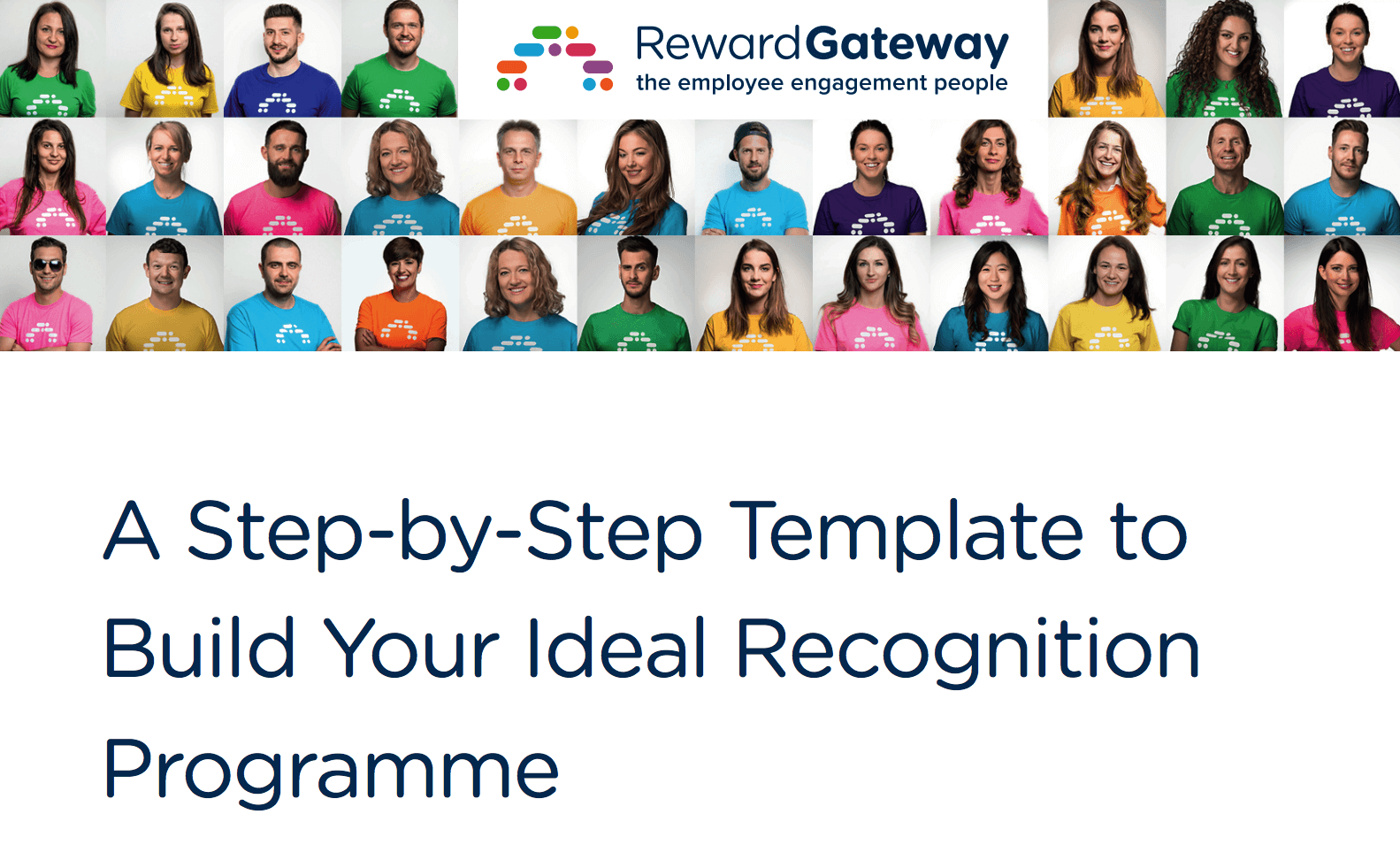Service awards can be a mixed bag, depending entirely on the type of company an employee works for. While some organisations incorporate “Years of Service Awards” or “Long Service Awards” (LSAs) into an attractive and engaging recognition strategy, there are some companies that give these awards and leave it at that.
While it goes without saying that work anniversaries are important and that long-standing, hard-working employees definitely deserve to be celebrated, as the world of work has shifted and people are staying for less time in their jobs, recognition needs to be an everyday occurrence.
In recent years, there’s been a shift in how people work and how often they change jobs – especially with the average tenure at just above four years.
Typical milestones for employee service awards, whether it be 5, 10 or 20 years, are less likely to be reached in the current UK workplace. So making the effort to show your people you care about them and their contributions should be a priority in 2024. Here are a few ways you can launch an employee recognition programme to be proud of
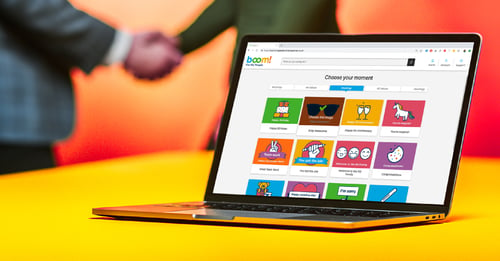
Why moving beyond years of service awards is key to boosting morale
Before we uncover the alternatives to years of service awards, it’s important to understand the why behind them. If your business is faced with high turnover and low retention, the first couple of years of employment are crucial for recognition and awards. It’s key to improve the employee experience and make an impact from your new starter’s first day and every day forward, not just after they’ve hit the five year mark.
This isn’t to say that your 15-year, tenured employee (if you have one) isn’t looking forward to being celebrated. And it doesn’t mean that all celebrations are meaningless. But what if you could deliver rewards and recognition that are truly memorable, something that employees find impactful, personal and meaningful? When employee service awards are done right, your people will feel recognised and appreciated.
When employee service awards are done right, your people will feel recognised and appreciated.
Years of service recognition can also take up a lot of your headspace – there’s a lot of planning, budgeting and manual work that goes into making sure these awards are a success. However, by automating that process, you can ensure your employees receive these awards on the exact day of their anniversary, helping free up some of your time so you can focus on more continuous recognition that will have a greater impact on employee engagement.
Embrace a new reward and recognition framework to reach the most people at your organisation
If you have a large population of tenured employees, then long service awards are likely to reach a big percentage of your workforce. But this scenario is becoming less common and effective as the employee tenure landscape continues to change. Instead, there are many layers to reward and recognition that help organisations transform their culture by recognising good, great and exceptional behaviour more frequently, in different ways.
We like to call this a “culture of continuous appreciation.”
Each organisation’s approach will look a little different — some companies may want to focus on more recognition over reward, others may want to evolve their reward offering for more frequent and accessible spot bonuses, for example. But by following a framework, you can build the right reward and recognition strategy for your business. Here’s what that looks like:
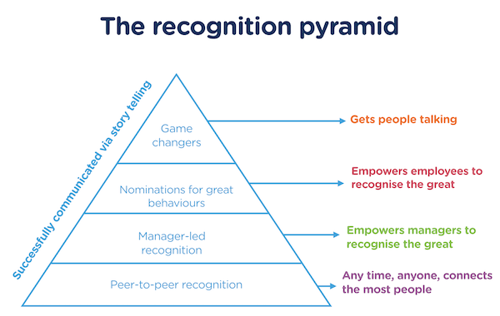
We call this our Recognition Pyramid. The width of the layers reflects the amount of people that recognition touches, with the goal of creating programmes that reach everyone in your business in some way. The reason it is a pyramid shape is that as you go up the pyramid, the effort and impact increases, which means less employees are recognised.
If your goal is to recognise consistently and fairly across your organisation, you need to focus on the bottom of the pyramid and work your way up. Many organisations in various industries have already adapted their employee recognition strategies to focus on everyday recognition, with awards and nominations still being a component of that.
Inspiring continuous recognition programmes with 3 real-life examples
![]()
1. When Heineken realised that its reward and recognition programme was only reaching and rewarding a small percentage of staff, the company decided to rebrand and repackage it, creating a seamless user journey and adding a diverse range of awards that encourage values-led behaviour.
The team set out to develop a new modern, flexible and innovative recognition programme with the following objectives:
-
-
To move away from large awards for few to smaller awards for many
-
Making recognition happen on a more timely basis
-
Providing recognition that could apply to all staff
-
Making sure to protect localised recognition strategies
-
Maximising value from existing budget
-
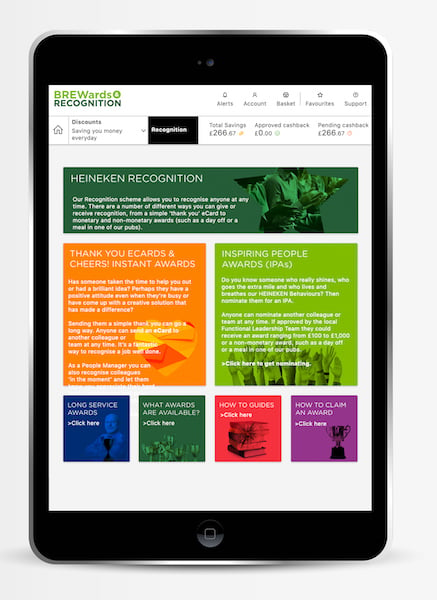
On Heineken's reward and recognition platform, employees can send one another team-based eCards which are shared on a social recognition wall to increase visibility, nominate others for "Cheers!" instant awards and more.
The reward and recognition programme was named “BREWards,” and imaginative, Heineken-relevant titles were present throughout the different rewards offered, including Cheers! instant awards of £50 and Inspiring People Awards, known as IPAs. In addition to monetary rewards from £100-£1,000, IPAs can also reward staff with a day off work or a dinner at one of Heineken’s pubs. The team chose non monetary awards such as these, plus the non-financial eCards on the platform to encourage peer-to-peer recognition.
In the first five months following the launch of BREWards, more than 50% of Heineken's workforce were recognised.

2. Charles Tyrwhitt took eCard creativity to the next level in their efforts to build deeper connections with their multigenerational and dispersed workforce.
By introducing personalised eCards for leadership to give out, and which were branded to represent the personalities of their senior leadership, they were able to elevate their recognition. These cards helped to connect leadership with their employees, and create a sense of satisfaction for individuals looking to earn and collect recognition in the form of all of the different cards.
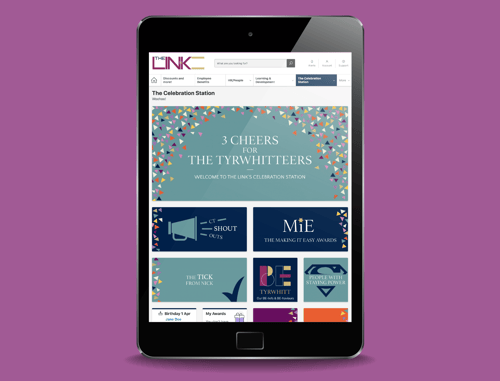
As part of their Reward & Recognition strategy, these eCards helped Charles Tyrwhitt to achieve a 60 point increase in its Best Companies score
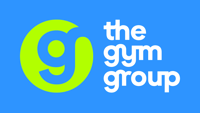
3. With a predominantly deskless workforce, The Gym Group needed a recognition scheme that not only celebrated their people and their successes, but created a stronger connection between their team and the organisation
Launching their platform ‘Core’, they were able to introduce recognition tools that related to their demographic. Their branded eCards included celebratory messaging such as “PB” and “Smashed It”, as well as awards such as the “Do You Even Spin Though?” award!

The Gym Group’s recognition programme got off to a roaring start with 1,500 eCards sent within the first day of launch, ultimately leading to a 14% increase in their employee engagement scores and a ranking in Glassdoor’s ‘Top 25 Places to Work’
Years of Service Awards can be a helpful ingredient in your reward and recognition strategy, but they won't improve employee retention and employee engagement by themselves. Discover how to truly transform your culture into one where employees are excited to come to work each day, feel a sense of belonging and feel appreciated for the hard work they do, with Reward Gateway




